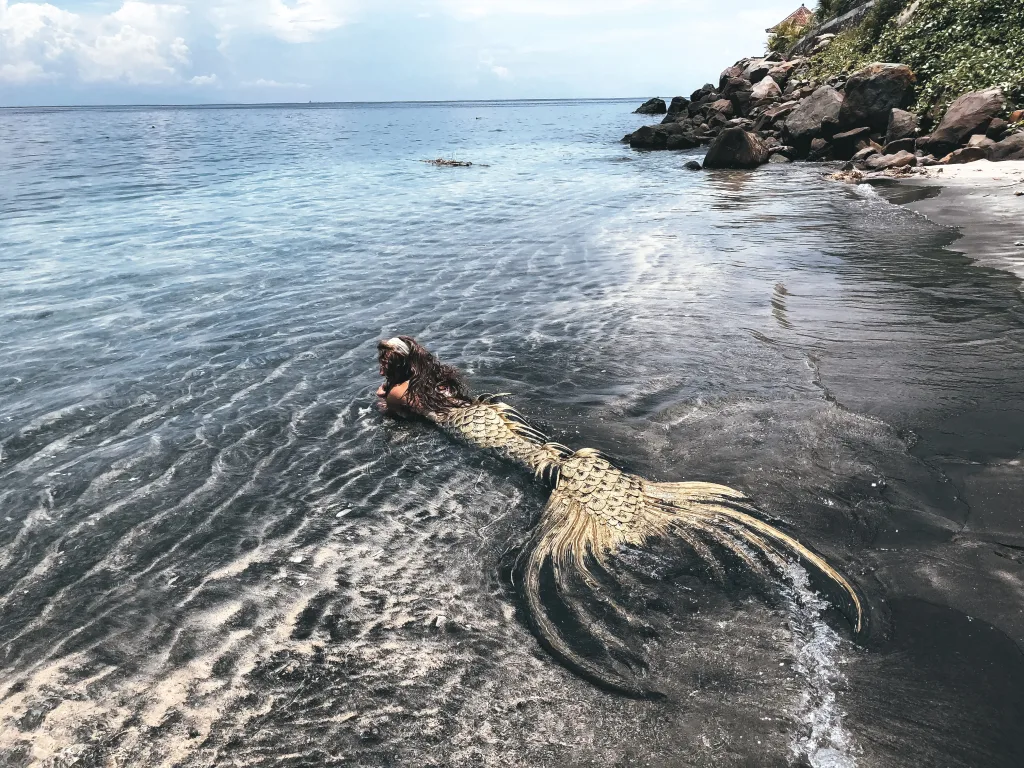Are Sirens Real? For centuries, sirens have been the stuff of legend and mythology. But are they real? Are sirens more than just a myth? Well, it depends on who you ask.
Sirens have been part of Greek mythology since ancient times. In Homer’s Odyssey, he describes them as creatures with half-bird and half-woman features that lure sailors to their deaths with the sweetness of their song. These creatures have captivated the imaginations of people around the world ever since.
In modern times, there have been reports of siren-like creatures in various locations around the world. Some believe that these reports may be evidence of real sirens sill living among us today. Unfortunately, however, there is no solid proof to substantiate these claims. Many of these reports are based on secondhand accounts and hearsay with no concrete evidence to back them up.
There have also been many hoaxes of supposed siren or mermaid bodies over the years, but these have all been debunked by scientists and researchers after careful examination. The most famous example is the Feejee Mermaid created by showman P.T Barnum in 1842, which was actually a mixture of parts from various animals sewn together to create a convincing looking creature.
Ultimately then, it seems unlikly that sirens are real creatures living among us today – at least not in any form we would recognize from Greek mythology or folk tales. That being said however, there is always a chance that some kind of undiscovered creature could exist somewhere out there in the depths of our oceans or hidden away elsewhere in nature; one can never be sure!
Are Sirens Real?
No, sirens are not a real thing. They originate from Greek mythology and have been used as a symbol in literature and art for centuries. There have been reports of siren-like creatures but no solid proof has been found to substantiate these claims. Additionally, many hoaxes of supposed siren or mermaid bodies have been debunked. Therefore, we can conclude that sirens are not a real thing but instead remain a part of legends and mythology.

The Effects of Sirens on Humans
Sirens, in Greek mythology, have the ability to lure humans towards them with their captivating singing voices. This enchantment was so powerful that it could cause sailors to lose control of their ships, crash onto the rocks of the island, and ultimately result in their destruction. According to legend, the Sirens would call out to sailors and entice them with promises of knowledge and adventure. However, once they drew close enough to hear the Sirens’ sweet voices and enchanting songs, they were unable to resist the temptation and would be drawn towards them until their ships crashed on the rocks. By doing this, the Sirens were able to cause great destruction among seafarers who ventured too close.
Locations of Siren Mermaids
In Greek mythology, the Sirens were believed to inhabit a group of small islands in the Mediterranean Sea known as the Sirenum scopuli. Located between the island of Sicily and the southern tip of the Italian peninsula, these rocky islets were thought to be home to these mythical creatures with their beguiling voices. According to ancient accounts, the Sirens lured sailors with their enchanting singing, only for them to be met with death or disaster when they got too close. It was said that even Odysseus had to be tied to his ship’s mast in order to survive their song. Today, although no physical evidence exists of these mysterious mermaids, the location remains a popular tourist destination thanks to its fascinating history.
Where Do Sirens Reside?
The Sirens of Greek mythology are said to have lived on an island called Anthemoessa, located in the middle of the Mediterranean Sea. This island was situated betwen the islands of Aeaea, home to Circe the powerful witch/sorceress, and the rock of Scylla.
The Sirens were believed to be beautiful creatures with captivating voices who lured sailors with their enchanting music. When a crew heard their song they would become so enchanted that they would be unable to resist steering their ship towards the rocky coastline. It is said that many ships were destroyed due to this temptation, as the rocks were too close for them to avoid in time.
The Sirens’ island is still shrouded in mystery and has never been found by modern-day sailors or scholars, though it is thought to be somewhee off the coast of Sicily, near Italy.
The Possibility of Sirens Living Forever
Yes, sirens have the ability to live forever in a state of permanent youth. Although they can still be killed or wounded, thir semi-immortality grants them an extended lifespan compared to humans. Additionally, their magical voices and harps give them the power to project music that can wound any would-be attackers.

Source: lithub.com
Number of Living Sirens
There are curretly seven Sirens alive in the Borderlands universe. This overturns Handsome Jack’s claim in Borderlands 2 that there were only ever six at once, as the final Eridian writing in Borderlands 3 reveals that there is a Seventh Siren. However, Nyriad warns that this Seventh Siren must never be found, so their identity and whereabouts remain a mystery.
Lifespan of Sirens
In the wild, the exact lifespan of sirens is unknown, but in captivity they can live up to 25 years. Greater sirens are vocal creatures, producing clicks or yelps that sound similar to the call of the American green tree frog. They are typically found in deep benthic zones whee aquatic insects are abundant.
Types of Sirens
The three types of sirens are Alert, Attack, and All Clear. An Alert siren emits a single tone to signify an emergency alert. An Attack siren emits an up-and-down, rising and falling tone to signify there is a homeland security or attack emergency. An All Clear siren is used by some communities to signify that the emergency is over, although many communities do not use this signal.
The Diet of Sirens
Sirens have been a mythical figure in literature and art for centuries, with many different interpretations of their behavior. While some stories describe them as having cannibalistic tendencies, most tellings of their stories do not suggest that they actually eat the sailors they lure over. Instead, it is thought that the Sirens use their mesmerizing song to keep sailors from leaving, eventually leading to starvation or exhaustion. In other interpretations, the Sirens are shown to be more benevolent creatures who can provde sustenance to their visitors. It is believed that these Sirens offer food and water to those who come near them, in an attempt to keep them coming back for more. Ultimately, the exact answer as to what Sirens eat will depend on which interpretation of their story you choose to believe.

The Cursing of the Sirens
Demeter, the goddess of harvest and agriculture, cursed the Sirens when they failed to protect her daughter Persephone. In her fury and grief, Demeter cursed the Sirens to beome half-human-half-birds – not to be confused with Harpies – although they are sometimes depicted in artistic representations as mermaids. The Sirens were originally human companions of Persephone, so their punishment was particularly harsh.
Can Sirens Be Used on Land?
Yes, Sirens, whih are fully aquatic and superficially eel-like animals, can go on land when necessary. They are neotenic creatures with no pelvis or hindlimbs, and possess external gills as well as lack of eyelids. They are also capable of burrowing in mud and can reach up to 95 cm in the largest species. The ability for them to move on land is demonstrated by the species Siren lacertina.
The Nature of Sirens: Are They Evil?
Yes, sirens are generally considered to be evil creatures. In Greek mythology, they were depicted as dangerous birds with the heads of women. They would lure sailors with their enchanting singing and then drown them when they came close. In other mythologies and folklore, they are often seen as malicious beings who use their charm and beauty to manipulate others or bring misfortune upon them. They can also be seen as wicked temptresses who use their powers to seduce unsuspecting men or lead them to their doom.
Are Sirens Human?
No, a siren is not a human. In Greek mythology, the sirens were creatures that were partly human and partly bird. They were desribed as having the heads of beautiful women with long hair and the bodies of birds with wings and feathers. They were known for their enchanting music and singing voices, which they used to lure sailors to their destruction on rocky shores.
Can Humans Transform Into Sirens?
Yes, a siren can turn into a human. This ability is called shapeshifting and it allows the siren to apear as either male or female, depending on how they choose to approach a victim. The transformation is done through an exchange of saliva which is transmitted through the siren’s song. Once the victim has been infected with the fluid, the transformation process begins. During this process, the siren takes on the physical characteristics of a human, such as skin color, hair type and facial features. However, their supernatural powers remain intact even when in human form. They are also able to revert back to their original state at any time in order to take advantage of their powers and abilities.
Conclusion
In conclusion, it is clear that sirens are creatures of legend and mythology. While there have been reports of siren-like creatures, as well as many hoaxes of supposed mermaid bodies, there is no solid proof that sirens exist in reality. The origin of the siren goes back to Greek mythology, where they were said to have beautiful voices which lured sailors to destruction. While the idea of a mysterious creature living in the sea has captivated imaginations for centuries, at this point in time it appears that sirens are nothing more than a myth.
